Why we explore Mars—and what decades of missions have revealed
In the 1960s, humans set out to discover what the red planet has to teach us. Now, NASA is hoping to land the first humans on Mars by the 2030s.

Mars has captivated humans since we first set eyes on it as a star-like object in the night sky. Early on, its reddish hue set the planet apart from its shimmering siblings, each compelling in its own way, but none other tracing a ruddy arc through Earth’s heavens. Then, in the late 1800s, telescopes first revealed a surface full of intriguing features—patterns and landforms that scientists at first wrongly ascribed to a bustling Martian civilization. Now, we know there are no artificial constructions on Mars. But we’ve also learned that, until 3.5 billion years ago, the dry, toxic planet we see today might have once been as habitable as Earth.
Since the 1960s, humans have set out to discover what Mars can teach us about how planets grow and evolve, and whether it has ever hosted alien life. So far, only uncrewed spacecraft have made the trip to the red planet, but that could soon change. NASA is hoping to land the first humans on Mars by the 2030s—and several new missions are launching before then to push exploration forward. Here’s a look at why these journeys are so important—and what humans have learned about Mars through decades of exploration.

Why explore Mars
Over the last century, everything we’ve learned about Mars suggests that the planet was once quite capable of hosting ecosystems—and that it might still be an incubator for microbial life today.
Mars is the fourth rock from the sun, just after Earth. It is just a smidge more than half of Earth’s size , with gravity only 38 percent that of Earth’s. It takes longer than Earth to complete a full orbit around the sun—but it rotates around its axis at roughly the same speed. That’s why one year on Mars lasts for 687 Earth days , while a day on Mars is just 40 minutes longer than on Earth.
Despite its smaller size, the planet’s land area is also roughly equivalent to the surface area of Earth’s continents —meaning that, at least in theory, Mars has the same amount of habitable real estate. Unfortunately, the planet is now wrapped in a thin carbon dioxide atmosphere and cannot support earthly life-forms. Methane gas also periodically appears in the atmosphere of this desiccated world, and the soil contains compounds that would be toxic to life as we know it. Although water does exist on Mars, it’s locked into the planet’s icy polar caps and buried, perhaps in abundance, beneath the Martian surface .
Today, when scientists scrutinize the Martian surface, they see features that are unquestionably the work of ancient, flowing liquids : branching streams, river valleys, basins, and deltas. Those observations suggest that the planet may have once had a vast ocean covering its northern hemisphere. Elsewhere, rainstorms soaked the landscape, lakes pooled, and rivers gushed, carving troughs into the terrain. It was also likely wrapped in a thick atmosphere capable of maintaining liquid water at Martian temperatures and pressures.
Introducing Nat Geo Kids Book Bundle!
Somewhere during Martian evolution, the planet went through a dramatic transformation, and a world that was once rather Earthlike became the dusty, dry husk we see today. The question now is, what happened? Where did those liquids go, and what happened to the Martian atmosphere ?
Exploring Mars helps scientists learn about momentous shifts in climate that can fundamentally alter planets. It also lets us look for biosignatures, signs that might reveal whether life was abundant in the planet’s past—and if it still exists on Mars today. And, the more we learn about Mars, the better equipped we’ll be to try to make a living there, someday in the future.
Past missions, major discoveries
Since the 1960s, humans have sent dozens of spacecraft to study Mars . Early missions were flybys, with spacecraft furiously snapping photos as they zoomed past. Later, probes pulled into orbit around Mars; more recently, landers and rovers have touched down on the surface.
But sending a spacecraft to Mars is hard , and landing on the planet is even harder. The thin Martian atmosphere makes descent tricky, and more than 60 percent of landing attempts have failed. So far, four space agencies—NASA, Russia’s Roscosmos, the European Space Agency (ESA), and the Indian Space Research Organization (ISRO)—have put spacecraft in Martian orbit. With eight successful landings, the United States is the only country that has operated a craft on the planet’s surface. The United Arab Emirates and China might join that club if their recently launched Hope and Tianwen-1 missions reach the red planet safely in February 2021.
Early highlights of Mars missions include NASA's Mariner 4 spacecraft , which swung by Mars in July 1965 and captured the first close-up images of this foreign world. In 1971, the Soviet space program sent the first spacecraft into Martian orbit. Called Mars 3 , it returned roughly eight months of observations about the planet's topography, atmosphere, weather, and geology. The mission also sent a lander to the surface, but it returned data for only about 20 seconds before going quiet.
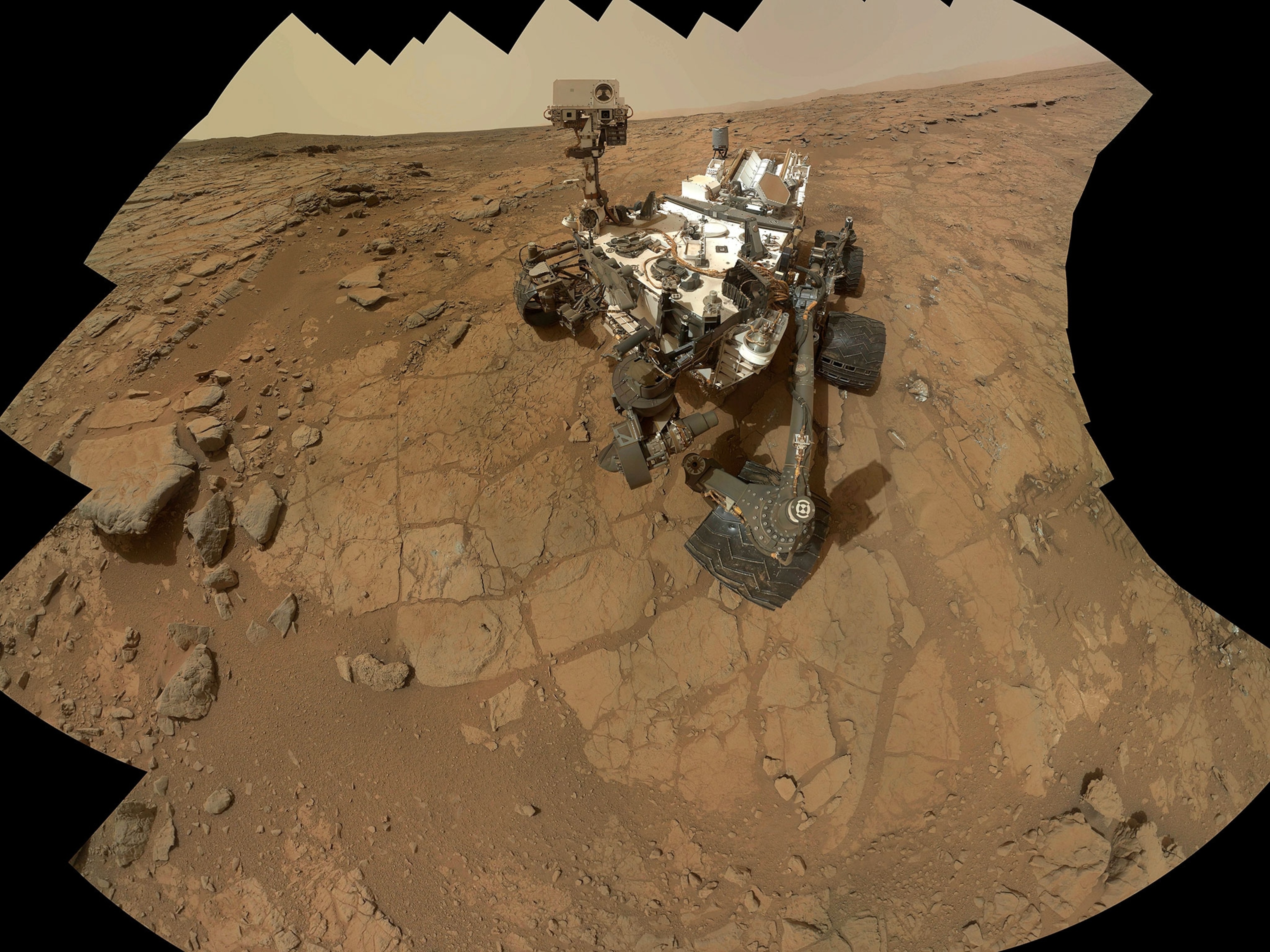
Over the subsequent decades, orbiters returned far more detailed data on the planet's atmosphere and surface, and finally dispelled the notion, widely held by scientists since the late 1800s, that Martian canals were built by an alien civilization. They also revealed some truly dramatic features: the small world boasts the largest volcanoes in the solar system, and one of the largest canyons yet discovered—a chasm as long as the continental United States. Dust storms regularly sweep over its plains, and winds whip up localized dust devils.
You May Also Like

Why this company sent ancient human fossils into space

Why go back to the moon? NASA’s Artemis program has even bigger ambitions

Second SpaceX megarocket launch ends with another explosion. What happens next?
In 1976, NASA’s Viking 1 and 2 became the first spacecraft to successfully operate on the planet’s surface, returning photos until 1982. They also conducted biological experiments on Martian soil that were designed to uncover signs of life in space—but their results were inconclusive , and scientists still disagree over how to interpret the data.
NASA’s Mars Pathfinder mission , launched in 1996, put the first free-moving rover—called Sojourner—on the planet. Its successors include the rovers Spirit and Opportunity , which explored the planet for far longer than expected and returned more than 100,000 images before dust storms obliterated their solar panels in the 2010s.
Now, two NASA spacecraft are active on the Martian surface: InSight is probing the planet’s interior and it has already revealed that “ marsquakes” routinely rattle its surface . The Curiosity rover , launched in 2012, is also still wheeling around in Gale Crater, taking otherworldly selfies, and studying the rocks and sediments deposited in the crater’s ancient lakebed.
Several spacecraft are transmitting data from orbit: NASA’s MAVEN orbiter , Mars Reconnaissance Orbiter , and Mars Odyssey ; ESA’s Mars Express and Trace Gas Orbiter ; and India’s Mars Orbiter Mission .
Together, these missions have shown scientists that Mars is an active planet that is rich in the ingredients needed for life as we know it—water, organic carbon , and an energy source. Now, the question is: Did life ever evolve on Mars , and is it still around?
Future of Mars exploration
Once every 26 months , Earth and Mars are aligned in a way that minimizes travel times and expense , enabling spacecraft to make the interplanetary journey in roughly half a year. Earth’s space agencies tend to launch probes during these conjunctions, the most recent of which happens in the summer of 2020. Three countries are sending spacecraft to Mars during this window: The United Arab Emirates, which launched its Hope spacecraft on July 20 and will orbit Mars to study its atmosphere and weather patterns; China, which launched its Tianwen-1 on July 23 , and the United States, currently targeting July 30 for the launch of its Perseverance rover .
Perseverance is a large, six-wheeled rover equipped with a suite of sophisticated instruments. Its target is Jezero Crater, site of an ancient river delta , and a likely location for ancient life-forms to have thrived. Once on the surface, Perseverance will study Martian climate and weather, test technologies that could help humans survive on Mars, and collect samples from dozens of rocks that will eventually be brought to Earth. Among its goals is helping to determine whether Mars was—or is—inhabited, making it a true life-finding Mars mission.
All of the robotic activity is, of course, laying the groundwork for sending humans to the next world over. NASA is targeting the 2030s as a reasonable timeframe for setting the first boots on Mars, and is developing a space capsule, Orion , that will be able to ferry humans to the moon and beyond.
Private spaceflight companies such as SpaceX are also getting into the Mars game. SpaceX CEO Elon Musk has repeatedly said that humanity must become “ a multiplanetary species ” if we are to survive, and he is working on a plan that could see a million people living on Mars before the end of this century.
Soon, in one way or another, humanity may finally know whether our neighboring planet ever hosted life—and whether there’s a future for our species on another world.
Related Topics
- SPACE EXPLORATION

What’s out there? Why humanity keeps pushing the cosmic frontier.
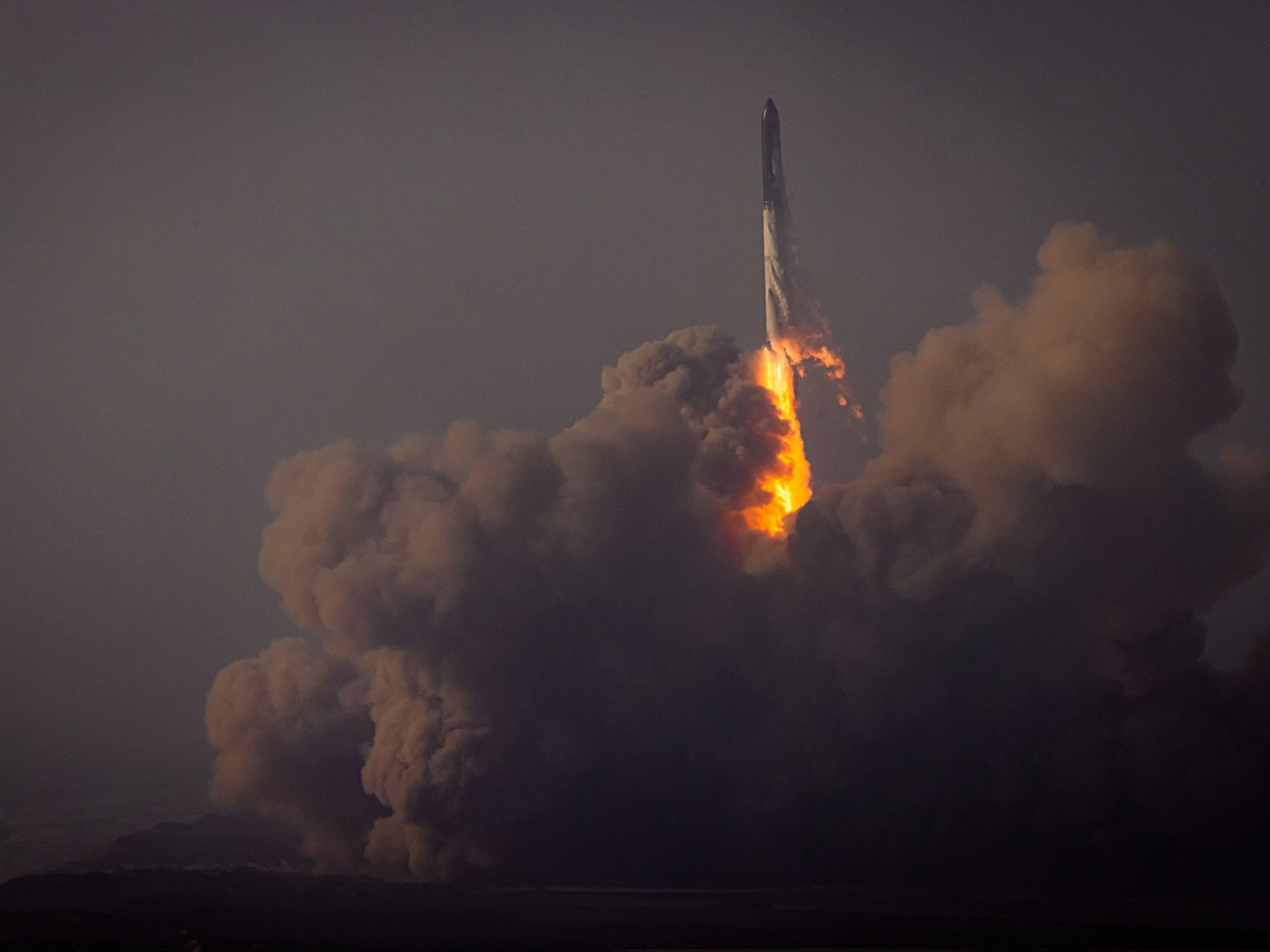
Starship’s fiery crash was still a win for the future of spaceflight. Here’s why.
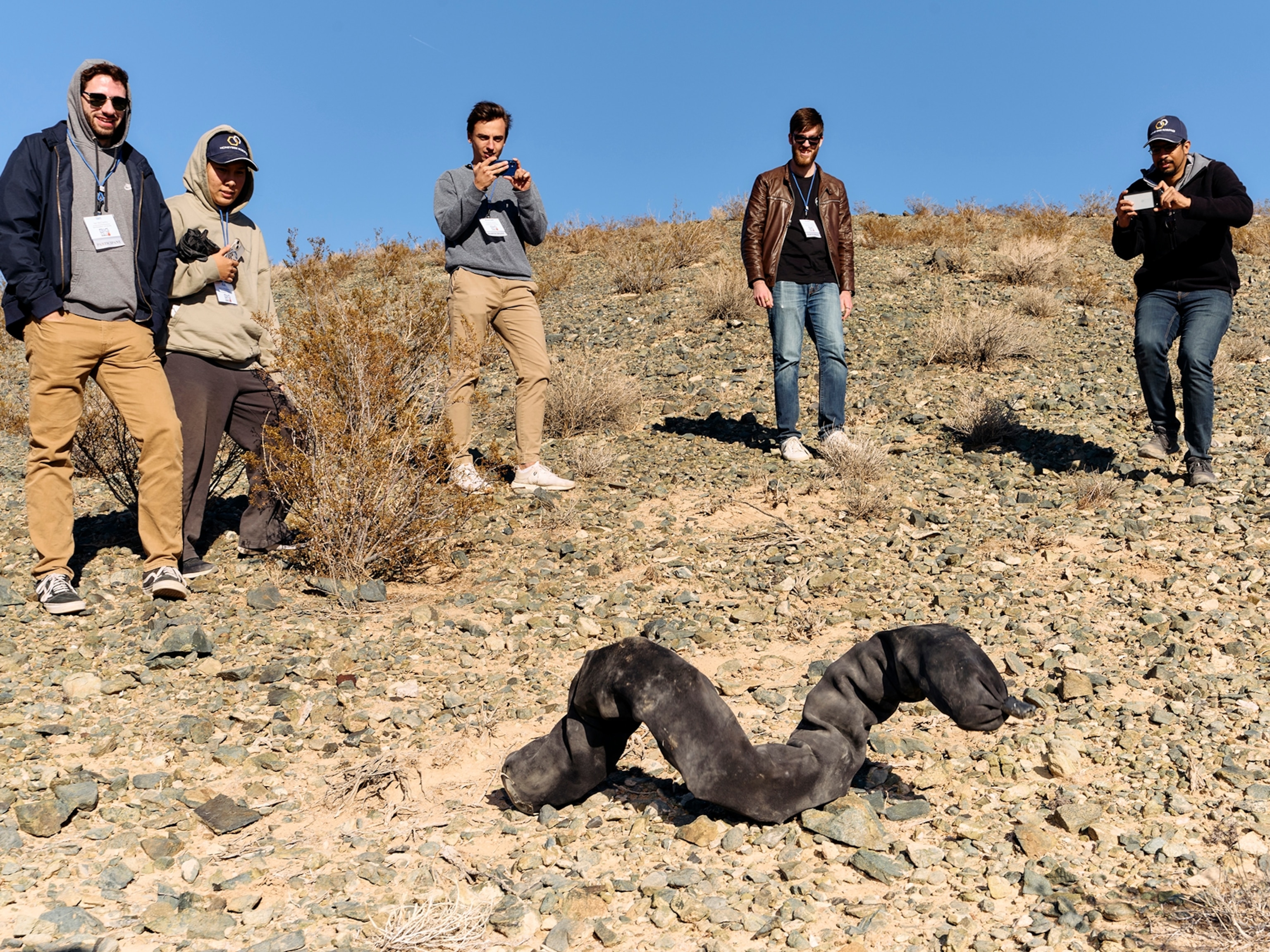
'Snakes' on the moon? These helpers could soon join our lunar mission.

Mars rover takes big steps in its most important mission

Why are people so dang obsessed with Mars?
- Environment
- Paid Content
- Photography
History & Culture
- History & Culture
- History Magazine
- Mind, Body, Wonder
- Terms of Use
- Privacy Policy
- Your US State Privacy Rights
- Children's Online Privacy Policy
- Interest-Based Ads
- About Nielsen Measurement
- Do Not Sell or Share My Personal Information
- Nat Geo Home
- Attend a Live Event
- Book a Trip
- Inspire Your Kids
- Shop Nat Geo
- Visit the D.C. Museum
- Learn About Our Impact
- Support Our Mission
- Advertise With Us
- Customer Service
- Renew Subscription
- Manage Your Subscription
- Work at Nat Geo
- Sign Up for Our Newsletters
- Contribute to Protect the Planet
Copyright © 1996-2015 National Geographic Society Copyright © 2015-2024 National Geographic Partners, LLC. All rights reserved
Search for:
Your cart is currently empty!
Why Should We Go to Mars?

Since humans first discovered other planets, we have been fascinated by Mars and looked for ways to get astronauts to the red planet. The idea doesn’t belong to just one country or century either, with early references in science books from the 1600s and newer ones video games and TV shows today. So what makes it so popular? Why not Venus, if it’s closer? Why even bother with other planets when there is so much for us to work on here on Earth? Let’s break it down together.
The space community has been coming up with plans to go to that bright spot in the sky for over 65 years. In that time, we’ve sent all types of robots to Mars – from the crash-landed Mars 2 satellite in 1971 and the Viking 1 lander in 1976, to the more recent Sojourner, Spirit, and Opportunity rover missions. The most recent rover, Curiosity, is powered by a nuclear engine and has more Twitter followers than most humans. But even the best rovers can only do so much.

Sometimes, humans are just more efficient than robots. Take, for example, the Spirit and Opportunity rovers. Opportunity was in operation for almost fourteen years, a deeply impressive feat of engineering. But in all that time, it only travelled 42 kilometers (26.1 miles). And both rovers have been sitting idle on Mars ever since they got stuck in the Martian soil. It’s been said that what a rover could do in 6 months, a human could do in 2 hours.
And of course, there’s a time delay for communication. It takes anywhere from 4 to 24 minutes to send a message from Earth to Mars, and the same amount of time for a message to come back. Since rovers move around based on commands from Earth, movements get bogged down not only by the processes of sending and receiving data, but also the time it takes for Earth-based scientists to decide the best course of action.
A human wouldn’t need to wait almost half an hour to decide to walk forward a few centimeters. There potential for what a human could do on the Martian surface is enormous. That’s why the idea of sending a human – as opposed to another robot – is so important.
But why Mars instead of another planet? Venus is closer than Mars by about 69 kilometers (42.9 miles). And even though people tend to think of Mars as Earth-like, Venus
holds the nickname “Earth’s twin.” When it comes down to it, Venus is a whirling ball of toxic, fiery greenhouse gases . Every lander or probe sent to its surface had a fairly short life, with the longest one lasting only two hours before being destroyed by the environment. Pressures are also comparable to 300 meters (984.3 feet) under the surface of Earth’s ocean, so everything gets totally crushed.
Ultimately, the other planets don’t provide many good options. They are uninhabitable either due to temperature, distance, or a lack of a surface to stand on. So, in terms of our own solar system, Mars is relatively comfortable, familiar, and ready for humans. It becomes the obvious destination.

But going to Mars isn’t just about how, it’s about why. Think about what Benjamin Franklin said about one of the first manned flights in a hot air balloon. When asked why do such a thing, he asked “What use is a newborn baby?” Journeys of this kind mark a beginning – the first step that turns into something greater.
Going to Mars will take all of us, from different countries and different backgrounds. And when we come together for a common goal, we truly can achieve anything – even plant the seed of human life on Mars. No matter how seemingly small, it will grow into more than we could have ever imagined. And future branches may extend into the rest of our solar system, galaxy, and beyond. Going to the Moon pumped blood and new excitement for science and technology in our own world, so just think about what stepping foot on another planet would do.
greenhouse gases: gases caught in an atmosphere that trap heat from the Sun
lander: a robotic spacecraft that sits on a planet but does not move around
nuclear engine: a generator that uses nuclear energy to stay active
probe: a robotic spacecraft that orbits or flies by a planet’s atmosphere
rover: a robotic spacecraft that moves around on a planet’s surface
Contributors

View all posts
Copyright @smorescience . All rights reserved. Do not copy, cite, publish, or distribute this content without permission.
SUBSCRIBE TO OUR NEWSLETTER
Subscribe to our mailing list to get updates to your email inbox..
Monthly Newsletter

Related Posts
Excessive internet use rewires teen brains, impacting decision-making, study finds.

Not Just Woofs Anymore: How AI Might Decode Dog Vocalizations

World’s Largest Fossilized Feces Collection Opens as a “Poozeum”

Are Soybean-Based Meat Alternatives Nutritionally Superior to Animal Meats?

- Privacy Policy
- Science Kits
- Affiliate Login
TED is supported by ads and partners 00:00
Why should we go to Mars?

Suggested Searches
- Climate Change
- Expedition 64
- Mars perseverance
- SpaceX Crew-2
- International Space Station
- View All Topics A-Z
Humans in Space
Earth & climate, the solar system, the universe, aeronautics, learning resources, news & events.

NASA, Global Astronomers Await Rare Nova Explosion

NASA Scientists Take to the Seas to Study Air Quality

NASA to Change How It Points Hubble Space Telescope
- Search All NASA Missions
- A to Z List of Missions
- Upcoming Launches and Landings
- Spaceships and Rockets
- Communicating with Missions
- James Webb Space Telescope
- Hubble Space Telescope
- Why Go to Space
- Commercial Space
- Destinations
- Living in Space
- Explore Earth Science
- Earth, Our Planet
- Earth Science in Action
- Earth Multimedia
- Earth Science Researchers
- Pluto & Dwarf Planets
- Asteroids, Comets & Meteors
- The Kuiper Belt
- The Oort Cloud
- Skywatching
- The Search for Life in the Universe
- Black Holes
- The Big Bang
- Dark Energy & Dark Matter
- Earth Science
- Planetary Science
- Astrophysics & Space Science
- The Sun & Heliophysics
- Biological & Physical Sciences
- Lunar Science
- Citizen Science
- Astromaterials
- Aeronautics Research
- Human Space Travel Research
- Science in the Air
- NASA Aircraft
- Flight Innovation
- Supersonic Flight
- Air Traffic Solutions
- Green Aviation Tech
- Drones & You
- Technology Transfer & Spinoffs
- Space Travel Technology
- Technology Living in Space
- Manufacturing and Materials
- Science Instruments
- For Kids and Students
- For Educators
- For Colleges and Universities
- For Professionals
- Science for Everyone
- Requests for Exhibits, Artifacts, or Speakers
- STEM Engagement at NASA
- NASA's Impacts
- Centers and Facilities
- Directorates
- Organizations
- People of NASA
- Internships
- Our History
- Doing Business with NASA
- Get Involved
- Aeronáutica
- Ciencias Terrestres
- Sistema Solar
- All NASA News
- Video Series on NASA+
- Newsletters
- Social Media
- Media Resources
- Upcoming Launches & Landings
- Virtual Events
- Sounds and Ringtones
- Interactives
- STEM Multimedia

Amendment 19: D.18 Euclid General Investigator Program: Names must be omitted from References.

PACE Celebrates National Ocean Month With Colorful Views of the Planet

Hubble Examines a Barred Spiral’s Light

NASA Astronauts Practice Next Giant Leap for Artemis

Former Astronaut David R. Scott

Space Station Research Advances NASA’s Plans to Explore the Moon, Mars

NASA Mission Flies Over Arctic to Study Sea Ice Melt Causes

Webb Finds Plethora of Carbon Molecules Around Young Star

Solid State Quantum Magnetometers—Seeking out water worlds from the quantum world

C.12 Planetary Instrument Concepts for the Advancement of Solar System Observations POC Change

The Big Event, 2025

Black Hole Week

Amendment 20: F.20 MOSAICS Seed Funding formerly SMD Bridge Program Seed Funding Final Text.

ARMD Solicitations

Winners Announced in Gateways to Blue Skies Aeronautics Competition

NASA, Industry to Start Designing More Sustainable Jet Engine Core

B.10 Heliophysics Flight Opportunities Studies Correction

Tech Today: Measuring the Buzz, Hum, and Rattle

Artemis Generation Shines During NASA’s 2024 Lunabotics Challenge

NASA Marshall Engineer Receives AIAA Honors Award

Meet the Simunauts: Ohio State Students to Test Space Food Solutions for NASA

Diez maneras en que los estudiantes pueden prepararse para ser astronautas

Astronauta de la NASA Marcos Berríos

Resultados científicos revolucionarios en la estación espacial de 2023
Nasa announces journey to mars challenge, seeks public input on establishing sustained human presence on red planet.

What do you need to bring, and how do you minimize the need for delivery of future supplies in order to establish a sustained human presence on a planet 140 million miles away from Earth?
NASA is embarking on an ambitious journey to Mars and Tuesday announced a challenge inviting the public to write down their ideas, in detail, for developing the elements of space pioneering necessary to establish a continuous human presence on the Red Planet. This could include shelter, food, water, breathable air, communication, exercise, social interactions and medicine, but participants are encouraged to consider innovative and creative elements beyond these examples.
Participants are asked to describe one or more Mars surface systems or capabilities and operations that are needed to achieve this goal and, to the greatest extent possible, are technically achievable, economically sustainable, and minimize reliance on support from Earth. NASA expects to make up to three awards at a minimum of $5,000 each from a total award pool of $15,000.
NASA’s efforts for sending humans to Mars is well underway today, with spacecraft monitoring Mars from orbit and rovers on the surface. The International Space Station is testing systems and is being used to learn more about the health impacts of extended space travel. NASA also is testing and developing its next generation of launch and crew vehicles — the Space Launch System rocket and Orion crewed spacecraft.
NASA’s two-prong approach is to build reusable space capabilities and incorporate commercial and international partners. By developing new technologies along the way and creating the systems necessary to maintain a permanent human presence in deep space, humanity will pioneer space, pushing out into the solar system to stay.
Given spacecraft limitations on weight and volume — and a minimum 500 days between resupply opportunities — innovative solutions are required for a mission to Mars that is not dependent on Earth for resources.
NASA seeks technical submissions that describe the development of capabilities and operational events necessary, in both the near- and long-term, to advance this bold journey. Submissions may consist of proposed approaches, capabilities, systems or a set of integrated systems that enable or enhance a sustained human presence on Mars. Solutions should include the assumptions, analysis, and data that justify their value. Submissions should include a process to develop, test, implement, and operate the system or capability.
Submissions will be judged on relevance, creativity, simplicity, resource efficiency, feasibility, comprehensiveness and scalability.
For more information about the challenge, and details on how to apply, visit:
http://go.nasa.gov/1JONps3
For more information about NASA’s journey to Mars, see:
Kathryn Hambleton Headquarters, Washington 202-358-1100 [email protected]
Read the May magazine issue on food and climate change
Why humans should go to Mars
By Laura H. Kahn | March 28, 2013
- Copy link Linked copied
Humans first emerged from Africa around 60,000 years ago in search of new lands to explore and colonize. Since then, we’ve spread out across much of the planet and even gone into low Earth orbit in the International Space Station. The need to explore new frontiers appears to be embedded in our DNA.
In April 2010, President Obama called for NASA to invest in research on an advanced rocket to send astronauts to a near-Earth asteroid by 2025 and then “eventually” to Mars. He did not give a specific timetable, unfortunately missing an opportunity to be as bold as President John F. Kennedy, who announced in 1961 that the United States would send an American to the moon by the end of the decade. Of course, President Kennedy’s decision was motivated primarily by politics, not science. By 1961, the Soviet Union had already sent the first human into orbit . The United States needed to surpass the Russians in order to win the space race.
Today, Cold War politics aren’t an issue. But there are still good reasons for the United States to press onward to Mars: The venture will satisfy that need to explore new frontiers, advance science and technology, and inspire the next generation. Most important, perhaps, it will promote global peace and cooperation, as nations work together to conquer the final frontier.
The challenge. Going to Mars won’t be easy. Some argue that the United States has lost its ability to solve big world problems and that the political will that spawned earlier missions no longer exists. At its peak in the mid-1960s, NASA received 4 percent of the federal budget; the agency spent around $24 billion ($180 billion in today’s dollars) on the manned moon missions. The Apollo program — which ran from 1961 to 1975 and first put a man on the moon in 1969 — pushed the boundaries of science, employed hundreds of thousands of people, and required the collaborative efforts of thousands of companies, universities, and government agencies.
Some argue that a manned Mars mission would be too dangerous and cost too much . We should be spending our limited national resources paying off the national debt and investing in infrastructure and education, they say.
And others argue that robots are already doing what humans would do on the red planet only much more cheaply. Indeed, the Mars rovers have been successful. They have sent back detailed images of the Martian surface. The Curiosity rover has been analyzing soil for signs of organic molecules. So far none has been detected, though the rover has found clear evidence that water was once present .
But while it’s true that robots are relatively cheap because they don’t require air, water, and food to survive on Mars and don’t need to be brought back to Earth, this also makes them a missed technology-development opportunity. Robots may not need the kind of technology that humans would need to set up camp on Mars — but humans back on Earth very much do. We need highly efficient energy and recycling systems if we’re to have any chance of reversing climate change. Such technological advances would also produce economic gains, offsetting the cost of sending people to Mars. As Neil deGrasse Tyson, director of the Hayden Planetarium, has said , “innovations in science and technology are the foundations of tomorrow’s economy.”
Some Mars enthusiasts aren’t waiting. For example, Elon Musk, founder of the companies PayPal, Tesla Motors, and SpaceX , has said he aims to put a man on Mars sometime in the next 20 years with a budget of less than $5 billion. And Bas Lansdorp, a Dutch engineer and entrepreneur , wants to send humans to Mars as part of a reality TV show.
Exploring New Frontiers. We tend to think of the Age of Exploration as the time between the 15th and 17th centuries, when European explorers such as Francis Drake and Ferdinand Magellan sailed around the world in search of new land and treasure. But in reality many peoples, including Polynesians around the year 400 and Vikings around 1000 , sought new lands to colonize.
In more recent years, exploration was driven more by a spirit of adventure than for the need to conquer. In 1914, Earnest Shackleton placed an advertisement in a London newspaper seeking crew for his Antarctic expedition. “Men wanted: For hazardous journey. Small wages, bitter cold, long months of complete darkness, constant danger, safe return doubtful. Honor and recognition in case of success.” Almost 5,000 men responded; Shackleton selected 28 for his crew.
Around the same time, science fiction began to popularize the idea of interplanetary exploration. Early novels such as H.G. Wells’s The First Men in the Moon and Jules Verne’s From the Earth to the Moon sparked the dream of space travel. Later, television shows and movies like Star Trek and Star Wars fired the imaginations of millions of kids. Thousands of fans attend Star Trek conventions every year, more than 40 years after the series first aired. They yearn to be part of a cause greater than themselves. A mission to Mars could give them one.
Earthly gains. Our society wouldn’t be the same today without the advances the Apollo missions made in computer hardware and software, robotics, nanotechnology, transportation, and other areas. A few of the tangible benefits from the combined scientific efforts of NASA and private industry include: improved fluid recycling technologies, better home insulation materials, improved water purification systems, better textiles for green buildings, and freeze-dried foods. A manned mission to Mars would require advances in energy and propulsion, food and water storage, waste disposal and recycling, radiation protection, bone mass preservation, and extreme weather survival. All of these technologies could benefit us on Earth, as we strive to reduce carbon emissions, limit pollution, and deal with an increasing number of extreme weather events.
Space science and exploration missions also promote peaceful international cooperation. In July 1975, America’s Apollo and Russia’s Soyuz docked while orbiting Earth; it was the first time that spacecraft from two different nations joined in a common mission. This breakthrough helped set the stage for construction of the International Space Station, and these collaborative space efforts in turn promoted positive relations between the United States and the Soviet Union and helped end the Cold War.
A manned mission to Mars would be an enormous and expensive undertaking, requiring the collaborative efforts of tens of thousands of people. The demands of the project should encourage nations to cooperate. Countries could contribute funds, brainpower, or manufacturing skills depending on their capabilities. Washington should bring Beijing in as a partner, rather than isolating it as a competitor.
Finally, a manned Mars mission could inspire the globe’s next generation of scientists. NASA already has an annual space settlement competition for high school students, and in 2012, it received 474 submissions from 19 countries. The Romanian team that tied for first place, with a design for an Earth-orbiting settlement called Aurora , summed up why human space travel is so important to them: “By making this project we feel as taking part in something bigger than just our ordinary teenage life … we consider our generation responsible for transforming what close-minded people regard as a far fetched dream into reality.” NASA or a private organization could launch new student competitions to design energy and recycling technologies for Mars.
Imagine if the world’s leaders actually strove to turn the dreams of these high school contest winners into reality. Scientific exploration is one of the noblest of human endeavors; combining it with space travel excites the imagination like nothing else.
Together, we make the world safer.
The Bulletin elevates expert voices above the noise. But as an independent nonprofit organization, our operations depend on the support of readers like you. Help us continue to deliver quality journalism that holds leaders accountable. Your support of our work at any level is important . In return, we promise our coverage will be understandable, influential, vigilant, solution-oriented, and fair-minded. Together we can make a difference.
Topics: Climate Change , Columnists

Laura H. Kahn
Laura H. Kahn is a physician and policy researcher and is the author of Who's in Charge? Leadership during Epidemics, Bioterror Attacks, and Other Public Health Crises . ... Read More

Once used as trash dumps, Sri Lanka’s wetlands are remade as flood-buffering parks
By Tristan Bove
How AI surveillance threatens democracy everywhere
By Abi Olvera
Despite the risks, Russia continues to use Ukraine’s Zaporizhzhia nuclear plant as a source of leverage
By Darya Dolzikova
Why a substantive and verifiable no-first-use treaty for nuclear weapons is possible
Why a misleading “red team” study of the gene synthesis industry wrongly casts doubt on industry safety.
By International Gene Synthesis Consortium (IGSC)
MIT researchers ordered and combined parts of the 1918 pandemic influenza virus. Did they expose a security flaw?
By Matt Field
RELATED POSTS

$600 million battery storage project meets resistance in California
By Erin Rode
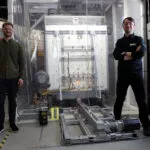
Can electrically conductive bricks replace fossil fuels?
By phil mckenna.

An obscure emission from wildfire—black carbon—is accelerating snowmelt
By matt simon.

New report chronicles toll of climate crisis on Latin America and the Caribbean
By bob berwyn.

Cost of climate change comparable to economic damage caused by fighting a war
By oliver milman, receive email updates, bulletin daily.

To protect global health security, Africa needs more pathogen research labs
By Tom Kariuki , Denis Chopera
- Subscribe to BBC Science Focus Magazine
- Previous Issues
- Future tech
- Everyday science
- Planet Earth
- Newsletters
For All Mankind: What’s stopping us from going to Mars?
The third series of this sci-fi drama posits an alternative timeline in which humans visit Mars in the 1990s. So could we soon be flying to the Red Planet?
Stephen Kelly
The AppleTV+ show For All Mankind envisions an alternative history where, instead of America landing on the Moon in 1969, the Russians got there first. This, the show posits, would have led to a fierce acceleration of the Apollo space programme, with a humiliated America becoming desperate to catch up to and exceed their Cold War rivals.
In the first two series, such acceleration leads to a fully operational base on the Moon, greater opportunities for female astronauts and an incident in which the Earth is pushed to the brink of nuclear armageddon. In series three, premiering on 10 June, the show goes even further: speculating that, by the early 1990s, humankind would have moved beyond the Moon, and set its sights on Mars .
But of course, embarking on a manned mission to Mars is a challenge enough for modern NASA, never mind a souped-up fictional 1990s version. “One of the big issues is distance,” explains astronomer Colin Stuart , author of books such as Mars: The Traveller’s Guide .
“It's a three-day trip to the Moon. And the thing is, it’s always three days because the Moon's distance from the Earth is always about the same. Whereas Mars’s distance from the Earth is changing all the time, because we're both going around the Sun at different speeds. Sometimes we're on the same side of the Sun as each other, sometimes we're on opposite sides. Even at its closest, it's a seven-month journey to get there, and the window of opportunity to do it in that time only comes around every 26 months.”

This length of time, combined with such a short launch window, presents enormous challenges for any astronaut hoping to make the seven-month journey to Mars. Around halfway to Mars, communication between the ship and Earth would be delayed by 10 minutes each way.
“In a very fast emergency situation, 20 minutes can be the difference between life and death,” says Stuart. And even then, the astronauts are completely on their own.
“The International Space Station is only 400 kilometres up,” Stuart adds. “And they have an empty ship there at all times so that if anything goes wrong they can escape and be back on Earth in half a day. Halfway to Mars, you haven’t got that.”
There’s also the engineering issue of how to protect astronauts from radiation. “The Solar System is flooded with loads of high-energy particles,” says Stuart. “Down here on the ground we are protected from those things by the Earth’s atmosphere and the Earth's magnetic field.
"Once you’re in space, beyond that field, you don't have that protection; your body is exposed to these high levels of radiation. Going to the Moon and back is a week, so it's not too bad. If you're going to be in space for 500 days, you don't have the option of outrunning this radiation. Just a single trip to Mars would expose an astronaut to their entire career's allowance of radiation.”
Possible solutions include lining the skin of the rocket with water (or frozen faeces!) as a shield; or adapting astronaut suits to give special protection to their vital organs.
Even if these travel issues are overcome, there is still the challenge of landing on the Red Planet. “Around a third of everything that has ever tried to land on Mars has failed,” says Stuart.
“When things come down to the Earth, if you get the angle right, you can use the Earth's atmosphere as a brake to slow you down. The issue with Mars is that the atmosphere is so thin that you don't have that at all. So you have to slow down, otherwise you're going to crash. And that's hard enough for a rover, which is the size of a car. But you’re talking about a starship which is as big as the biggest aeroplane in the world and is fully loaded with all the things a team of human astronauts need to survive. Slowing that down so that you land softly on Mars – that’s the real challenge.”
Read more about Mars:
- There may still be active volcanoes on Mars
- Could there be fossils on Mars?
- How did Mars lose its atmosphere?
The landing is so perilous that it’s often referred to as the seven minutes of terror , a reference to how long it typically takes to land a rover on Mars. And the aforementioned delay in communication only adds to the fear.
“Once you're at Mars, the delays are more like 20 minutes each way,” says Stuart. “When mission control on Earth get the signal that you hit the top of the Martian atmosphere, that's it. When communication is re-established you’re either alive on the ground or dead on the ground.”
If the astronauts of For All Mankind hope to establish a base on Mars, as they did on the Moon, then that also presents a whole new range of problems.
“The first thing you've got to deal with is you must respect your outside,” says Stuart. “You must wear a spacesuit at all times. The air on Mars is so thin that the boiling point of water is about 35°C. Your body temperature is 37°C. In other words, your blood will start to boil in your veins.”
For short-term visits, astronauts could only stay for around 30 days (because of the short window of time Mars is nearest to the Earth); longer term, astronauts would need to establish shelter from radiation (Stuart suggests that the lava tube network of regions such as Noctis Labyrinthus could provide protection).

Food and supplies, meanwhile, would require future planning. “Initially, you would need to send your food and rocket fuel for your return journey in advance. Long-term, you could talk about growing things on Mars ,” says Stuart. “Oxygen-wise, the good news is there’s plenty of water on Mars. Although it’s not liquid, it’s frozen as ice.”
The bad news, however, is that converting this water into oxygen could be complicated due to Mars’s ferocious dust storms. “If you've got solar panels on the surface of Mars and these solar panels are completely coated in dust, and there's so much dust in the sky that it’s blocking out the Sun, then you’re in serious trouble if you're running your oxygen supply by using the electricity from solar panels to extract oxygen from water. These dust storms can last for months at a time. It can get dark and dingy on Mars.”
Yet even if the astronauts survive the journey, the landing and overcome all of Mars’s attempts to kill them, they must also contend with intense psychological difficulties. “No human in history will ever have been as isolated as those travellers,” says Stuart. “Even on the Moon, you can still see the Earth. It’s reassuringly there. Halfway to Mars, it is just a speck in the distance.”
Between 2007 and 2017, an experiment called MARS-500 sought to simulate the psychological conditions of travelling to Mars by locking up crews of astronauts together for 520 days. The crews weathered it relatively well, although some did suffer from sleep and psychological issues on their return journey.
Plus, as Stuart points out, such an experiment is no match for the reality. “You must have known you're actually in Moscow,” he says. “If you had a heart attack, someone’s going to come in and save you.” Whereas on Mars, there would be nothing but loneliness and dust.
About our expert, Colin Stuart
Colin is an award-winning astronomy writer and speaker.
Read more from Popcorn Science:
- Jurassic World: could we live alongside dinosaurs?
- The secret science experimentation that inspired Stranger Things
- How close are we to building real-life lightsabers?
Share this article

- Terms & Conditions
- Privacy policy
- Cookies policy
- Code of conduct
- Magazine subscriptions
- Manage preferences

- 2018 Lockheed Martin Fact Sheet
- Leadership & Governance
- Business Areas
- Global Activities
- Lockheed Martin Ventures
- Military and Veteran Support
- STEM Education
- Employee Focused Programs
- Equal Opportunities Programs
- Sustainability Report
- Energy, Environment, Safety & Health
- Code Of Conduct
- Business Conduct Compliance Training
- Ethics Awareness Training
- Integrity Minute
- Sikorsky, a Lockheed Martin company, is engineering the future of vertical lift.
- Maritime Systems
- Missile Defense
- Training, Logistics & Sustainment
- Weapon Systems
- Advanced Manufacturing
- Autonomous and Unmanned Systems
- Directed Energy
- Electronic Warfare
- Radar & Sensors
- Business Area Procurement
- Supplier Cybersecurity
- Supplier Diversity
- Supplier Training
- An educational program inspiring young innovators, explorers, inventors and pioneers to pursue STEM careers.
- Media Contacts
- News Releases
- Speeches and Statements
- Annual Reports
- Trade Shows
- Social Media
- Find an Expert
- At Lockheed Martin, we're pushing the boundaries of scientific discovery and defending global security—making science-fiction concepts, real.
- Solving the Challenge of Moving Wind Turbine Components
- What can you do with an interest in aviation and passion for helping others around the world?
- If you read this article, odds are you already made one of the best decisions of your professional life—you’re pursuing a career in aviation.
- Challenge yourself with thought-provoking projects.
- Life at Lockheed Martin
- Campus Events
- Engineering Connect
- Leadership Development
- On-Site Hiring Events
- Meet Our Military Relations Managers
- Military Connect
- Military Events
- Partnerships
- Skills Translator
- Career Areas
- Returning Job Seekers: Students
- Returning Job Seekers: Experienced
- United States
- United Kingdom
- Learn about our national research and development operations centre for our current research portfolio in Australia.
- English | French
- English | Hebrew
- English | Korean
- In the Community
- Diversity & Inclusion
- Sustainability
- Capabilities
- Enabling Technologies
- View All Products
- Hybrid Airship
- How a Career in Aviation Can Help People Around the Globe
- 6 To Dos Before Applying for a Job In Aviation
- Read our stories of Innovation
- Get to Know Lockheed Martin
- College Students
Lockheed Martin IQ
Why do we go to mars.
As the Perseverance rover begins its journey into deep space, it’s a great time to reflect on why we explore and go to Mars. Scientists have been exploring our solar system with robotic spacecraft for nearly six decades in search of answers to three questions: Where did we come from? Where are we going? Are we alone?
These exploration missions help scientists understand the evolution of the universe, how it was formed and is evolving, literally re-writing science books. Mars is a planet we have studied since the beginning of these robotic space missions. Not too unlike our planet, Mars is believed to have once had a strong magnetic core, thick atmosphere and running water , much like we do on Earth today. In fact, Mars may have supported life . However, over the years, the atmosphere on Mars has been stripped away by the solar wind and the water is frozen on the surface. Understanding how this evolution on Mars took place some billions of years ago will lend great insights into the evolution we may experience on our planet as we see our climate change accelerating.
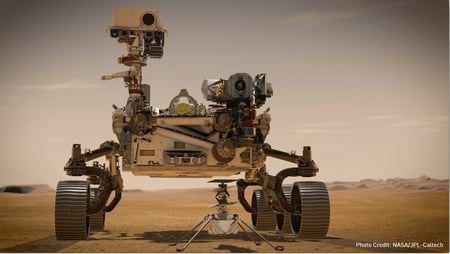
The Mars 2020 mission includes the Perseverance robotic rover loaded with seven science instruments, 19 cameras and the Ingenuity, an experimental helicopter . Mars 2020 will begin the process of collecting physical data we can evaluate on Earth. In fact, Perseverance is the first spacecraft equipped with a sample caching system to allow for the collection of samples to be returned to Earth under the Mars Sample Return program , currently in the mission formation period. The Perseverance rover will also search for signs of ancient life — if found, this would be the most fascinating discovery! Ingenuity, the first non-Earth helicopter, is hitching a ride on Perseverance and brings some first-ever capabilities to Mars exploration. This pioneering space helicopter will test the ability and usefulness of Mars aerial exploration to study the Red Planet from a different perspective than the time-tested rovers. Why? Once humans get to Mars, helicopters can help with further exploration and terrain management.
Robotic missions lead the way for human exploration
Speaking of humans, robots are leading the way for women and men to safely explore Mars. The work being done by robotic spacecraft and rovers will help us better understand the environment and the safety precautions necessary to sustain life on the Red Planet. While we have been exploring Mars since the 1960s , less than 3% of Mars has been captured through high resolution imagery and our robotic explorers have traversed only a small fraction of the surface. The combination of humans and robotic exploration — with humans in the loop controlling the robots — will accelerate exploration, cause our scientific investigations to move faster, and will allow us to uncover many of the secrets this mysterious planet holds. Learning to protect Earth’s natural resources must be a primary objective of deep space exploration. Uncovering the hidden truths of the Red Planet will help us create a better future here at home.
NASA’s Mars 2020 mission successfully launched on July 30, 2020 from Cape Canaveral, Florida. The Perseverance rover will land on Mars in February 2021.
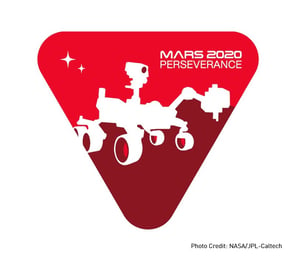
© 2023 Lockheed Martin Corporation. All Rights Reserved. / Privacy / Terms of Use / EU Data Protection Notice / Cookies /
Stock Price [ 315.87 ]

Get Fun Kids on your new speaker!

Bored? Get the FREE Fun Kids app!

Check out all Fun Kids podcasts

All new Fun Kids Science Weekly
Destination mars.
Robots are being sent into space to explore Mars for us!
Why do we want to go to Mars?
What are scientists hoping to find out?
After Earth, Mars is the most earth like planet in the Solar System.
It’s in something called the ‘Goldilocks Zone’ – that means its close enough to the Sun to be able to sustain life – not too hot that any life is just blasted away or too cold that there’s not enough energy for lifeforms to survive.
To help sustain life as we know it, you need two key things – water and methane – and both have been found on Mars.
Scientists have found patterns in the rock and dark stripes across the land that suggest there were once rivers on Mars. Maybe that water is still there – under the surface of the planet.
More to click...
- Santa visits 5,000 homes a second!
- Find out about artificial intelligence
- Find out about future fuels
The Mars atmosphere also has methane, and that’s a gas that can be a sign of organic activity.
NASA and the European Space Agency are working together on a project called the Aurora Programme that will send a special robot to Mars called the ExoMars Rover in a special mission to determine if life exists – or ever existed on the red planet.
The ExoMars Rover will probe the planet like never before and provide unprecedented data on the history and composition of this fascinating world.
Whilst the goal is to send human astronauts to Mars, before any human can set foot on Mars, scientists need to know as much as possible about the red planet, like what are the dangers to human explorers and how easy is it to live and work on Mars?
The ExoMars Rover mission will be followed by a further mission in the 2020s, which will provide data for a planned human mission in the 2030s.
The ExoMars Rovers will use the very latest technology – panoramic cameras with enhanced zoom, infrared spectrometers and organic molecule analysers to test samples.
You can hear Deep Space High: Destination Mars on Fun Kids Radio or listen to the series below!
How to listen to Fun Kids Radio...
📻 Fun Kids is on DAB Digital Radio in the UK! 🚗🏠
📱 Download the FREE Fun Kids app!
💻 Listen online - click to listen live!
🔊 Ask your smart speaker to "play Fun Kids"!
LISTEN LIVE NOW!
Deep Space High: Destination Mars with support from the UK Space Agency .
Click here to find out more!
Leaving Fun Kids?
Should We Go to Mars? Carl Sagan Had Thoughts
It’d be “a step more significant than the colonization of land by our amphibian ancestors some 500 million years ago.” But Sagan had reservations.

The U.S. and Chinese governments hope to send humans to Mars in the 2030s. Elon Musk claims his SpaceX company may be able to accomplish the task even sooner. But is this a good use of Earth’s resources? Back in 1991 the legendary astronomer and science communicator Carl Sagan shared some ideas about how to think about that question.

Two years earlier, in 1989, President George H.W. Bush had announced a plan to land the first human on the red planet in 2019. (As you may be aware, this goal ultimately went unmet ). Sagan wrote that he’d been dreaming of Mars voyages since childhood, and advocating for human missions to the planet for several years. He predicted that the eventual creation of self-sustaining colonies on other plants would be an enormous milestone in history—“a step more significant than the colonization of land by our amphibian ancestors some 500 million years ago.”
But, he added, “that doesn’t mean it has to happen today. It will also be a transforming event if it happens 100 years from now.”
The central downside Sagan saw was the price tag. He cited a long list of “clear, crying national needs”—including homelessness, the AIDS epidemic and the need for alternatives to fossil fuels—that might be better candidates for large shares of the federal government’s discretionary budget.
Sagan ran down a list of common justifications for a Mars mission: Advancement of basic scientific knowledge? Useful, but probably accomplished nearly as well with far cheaper robotic missions. Promoting science education? OK, but wouldn’t it be better to just fund schools and libraries? “Spinoff” technological benefits for the domestic economy? “But this is an old argument: Spend $75 billion to send Apollo astronauts to the Moon, and we’ll throw in a free nonstick frying pan. One can clearly see that if we are after frying pans, we can invest the money directly and save almost all of that $75 billion.”
He found less tangible arguments for sending humans to Mars more convincing. Perhaps international missions could bring nations together in the wake of the Cold War. The grand adventure of space travel might inspire young people with optimism about the future. And an “emerging cosmic perspective” of humanity’s place in the universe might help in “clarifying the fragility of our planetary environment.”
Weekly Newsletter
Get your fix of JSTOR Daily’s best stories in your inbox each Thursday.
Privacy Policy Contact Us You may unsubscribe at any time by clicking on the provided link on any marketing message.
Sagan ended his essay with suggestions for research and development projects that could support an eventual mission to Mars, while also providing other benefits. Ultimately though, he argued, the top way to support the exploration of Mars was to address pressing matters on Earth.
“Achieving even modest improvements in the serious social, economic, and political problems that our global civilization now faces could release enormous resources, both material and human, for furthering space exploration and other worthy goals,” he concluded.
Support JSTOR Daily! Join our new membership program on Patreon today.

JSTOR is a digital library for scholars, researchers, and students. JSTOR Daily readers can access the original research behind our articles for free on JSTOR.
Get Our Newsletter
More stories.

- Aurorae and the Green of the Night Sky

- IceCube Detector Confirms Deep-Space “Ghost Particle” Phenomenon

- How Two Rebel Physicists Changed Quantum Theory

How the Universe Forges Stars from Cosmic Clouds
Recent posts.
- Heritage Bilinguals and the Second-Language Classroom
- The Uneven Costs of Cross-Country Connectivity
Support JSTOR Daily
Sign up for our weekly newsletter.
Space Exploration
Explore space exploration, human spaceflight, launches & spacecraft, private spaceflight, search for life, latest about space exploration.
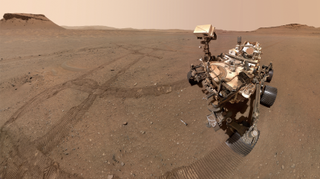
NASA's wants new ideas for its troubled Mars Sample Return mission
By Brett Tingley published 7 June 24
NASA's Mars Sample Return mission has faced quite a few hurdles, and the agency has selected ten studies to try and find more affordable and quicker means of going about the project.

Virgin Galactic eyes June 8 for final commercial spaceflight on VSS Unity spaceplane
By Meredith Garofalo published 7 June 24
Virgin Galactic aims to launch its seventh commercial spaceflight mission on June 8 during the final flight of its VSS Unity suborbital spaceplane.
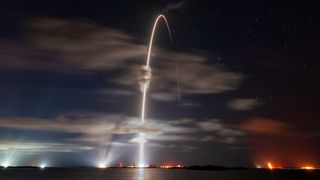
SpaceX launching 22 Starlink satellites from Florida tonight
By Mike Wall published 7 June 24
SpaceX plans to launch yet another batch of its Starlink internet satellites from Florida's Space Coast tonight (June 7).
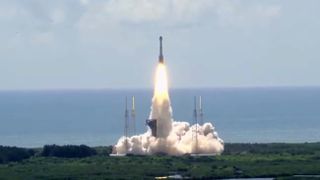
Boeing Starliner 1st astronaut flight: Live updates
By Elizabeth Howell, Tariq Malik last updated 7 June 24
Boeing moving toward a June 1 launch of its first-ever Starliner astronaut mission for NASA.
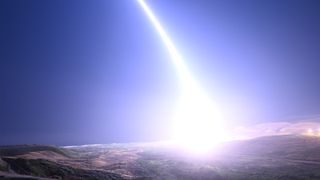
US military test launches 2 unarmed intercontinental ballistic missiles in 2 days
The United States Air Force and U.S. Space Force conducted two routine test launches of unarmed intercontinental ballistic missiles this week from Vandenberg Space Force Base.

On this day in space! June 7, 1965: NASA's Gemini 4 mission returns to Earth
By Hanneke Weitering last updated 7 June 24
On June 7, 1965, after a four-day mission and 62 orbits, NASA's Gemini 4 mission returned to Earth with an Atlantic Ocean splashdown.

South Korea creates new KASA space agency, sets sights on the moon and Mars
By Andrew Jones published 7 June 24
South Korea has announced the creation of a new space agency and is aiming to land its own spacecraft on the moon and Mars in the coming decades.

'Sudden, brief, and unexpected:' dearMoon crew laments cancellation of private SpaceX Starship moon mission
By Samantha Mathewson published 7 June 24
Crew members selected for a planned flight around the moon funded by Japanese billionaire Yusaku Maezawa shared public feelings of disappointment after the mission's cancellation.

A billionaire wanted to save the Hubble Telescope — here's why NASA politely declined
By Monisha Ravisetti published 7 June 24
Billionaire Jared Isaacman wanted to conduct a private Hubble Telescope reboost mission. NASA says 'not yet.'
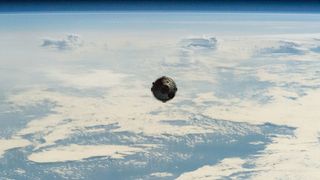
Thruster glitches and helium leaks can't stop Boeing's Starliner astronaut test flight — but why are they happening?
By Tariq Malik published 7 June 24
Boeing's Starliner Crew Flight Test faced down thruster glitches and helium leaks to reach the International Space Station on June 6. Why all the glitches and is NASA worried?
Get the Space.com Newsletter
Breaking space news, the latest updates on rocket launches, skywatching events and more!
- 2 Virgin Galactic eyes June 8 for final commercial spaceflight on VSS Unity spaceplane
- 3 SpaceX launching 22 Starlink satellites from Florida tonight
- 4 Jupiter's raging gas cyclones may actually mirror Earth's oceans. Here's how
- 5 Why is Neptune's magnetic field so weird? An exotic molecule may be the answer
- Share full article
For more audio journalism and storytelling, download New York Times Audio , a new iOS app available for news subscribers.
Biden’s Push to End the War in Gaza
The american president revealed a secret cease-fire proposal that may force israel’s leader to choose between the end of the war and his political survival..
This transcript was created using speech recognition software. While it has been reviewed by human transcribers, it may contain errors. Please review the episode audio before quoting from this transcript and email [email protected] with any questions.
Hey, it’s Michael. Before we start today, we wanted to invite you to something really special. The legendary Tribeca Festival is starting a brand new annual gala to celebrate excellence in audio. And for this, the inaugural year, they’ve chosen to celebrate “The Daily.” We know that you, our incredible audience, are all over the world, but we’d like you to join us.
The Gala is in New York on June 9th at 5:00 PM. You can get all the details and buy tickets at tribecafilm.com/thedaily. That’s tribecafilm.com/thedaily. I’m going to be there. So is Sabrina, along with a bunch of us from the show. Mo Rocca is going to host it. So if you’re in the area or visiting, we’d love to see you there. OK, on with today’s show.
From “The New York Times,” I’m Sabrina Tavernise. And this is “The Daily.”
[MUSIC PLAYING]
In an unexpected speech last week, President Biden revealed the details of a secret proposal intended to end the war in Gaza. Most surprising was where that proposal had come from. Today, my colleague Isabel Kershner explains Biden’s gambit and the difficult choice it presents for Israel’s leader, Benjamin Netanyahu.
It’s Wednesday, June 5.
Isabel, tell us about this speech from President Biden last Friday at the White House.
So last Friday, President Biden made a speech. And it came at a pivotal moment in the war because for weeks beforehand, the whole world had been focused on Israel’s long delayed invasion of the city of Rafah, the southernmost city in the Gaza Strip and also the city that about a million displaced Palestinians had fled to to find refuge from fighting in other areas of the Gaza Strip. So understandably, there was huge concern internationally and particularly a lot of pressure coming from the White House for Israel not to go into Rafah. It was just considered way too risky.
But for the Israelis, they were saying the last battalions of Hamas are there. Many hostages are there. And without taking control of that area, the Israelis felt they wouldn’t have accomplished anything.
So in the end, they did begin to move into the Eastern part of Rafah. But then as the Israelis were operating in Eastern Rafah with their tanks and ground troops, the Israelis on May 26 carried out a strike, an airstrike.
This was an attack meant to target two Hamas operatives. And they did, in fact, strike those two operatives and killed them with what they said were the smallest missiles that their jets could carry.
Unfortunately, that strike then set off an absolutely devastating fire because the area the strike took place in is right by a camp of makeshift shacks and tents where hundreds or thousands of Palestinians were sheltering. This fire ripped through the tents and ended up killing 45 civilians according to the Gazan health authorities. And it was exactly the kind of disaster that everybody had feared if Israel were to operate in this crowded, southern, dusty border town.
Which presumably put a lot more pressure on the Biden White House to do something about this war.
That’s right. Now, we know that the White House, the Biden administration, would very much like to see this war come to an end as soon as possible. And then on Friday —
Good afternoon. Before I begin my remarks —
— President Biden gives a speech. And surprisingly —
Now to another issue.
— this speech when it turns to the Israel-Hamas war was not about Rafah. In fact, it was something totally different and much bigger.
Israel has now offered — Israel is offering a comprehensive new proposal. It’s a road map to an enduring ceasefire and the release of all hostages.
What President Biden described as the outline of an Israeli proposal for a ceasefire truce and hostage release deal with Hamas that would end the war.
This proposal has been transmitted by Qatar to Hamas. Today, I want to lay out his terms for the American citizens and for the world.
And, Isabel, what did he mean exactly by the Israeli proposal?
Well, there’s been a lot of smoke and mirrors around this whole process of talks and negotiations between Israel and Hamas. And, in fact, the last time we saw a negotiation actually result in a temporary cease fire and a partial hostage release was at the end of last November.
But, in fact, there had been this on again, off again attempt at getting negotiations back on track over the last few weeks. And it soon came to light that this was the latest Israeli proposal that was apparently presented. And this proposal it turns out was unanimously approved as a basis for the negotiation by Israel’s war cabinet.
And here is an American president spelling out this previously undisclosed Israeli position on television.
Absolutely. And the Israeli public knew nothing about this.
So what does Biden actually say? What does he say is in this proposal?
OK, well, what he says —
This new proposal has three phases. Three.
He presents it as a deal in three phases, which is generally in line with all the previous plans of the last few months. And the first phase would involve a six week temporary ceasefire during which a certain number of hostages —
— including women, the elderly, the wounded —
— the most vulnerable ones —
There are American hostages who would be released at this stage. And we want them home.
— would be exchanged for hundreds of Palestinian prisoners in Israeli jails. And Israeli forces would be withdrawing from population centers within the Gaza Strip.
— with 600 trucks carrying aid into Gaza every single day.
Humanitarian aid would be flowing at a much greater level and generally the beginning of a change in atmosphere and climate.
So this seems in some ways like the temporary ceasefire in November, right? Women and children, vulnerable hostages, a cease in hostilities for six weeks. What about phase two?
Well, here we get to the crucial part because during phase one, the sides are supposed to start negotiating phase two.
Now, I’ll be straight with you. There are a number of details to negotiate to move from phase one to phase two.
And phase two is supposed to culminate in all remaining living hostages released and exchanged again for many more Palestinian prisoners from Israeli jails. This would involve also the withdrawal of Israeli troops from the Gaza Strip. And in his speech, President Biden does say that as long as Hamas lives up to its commitments, the temporary ceasefire would become, in the words of the Israeli proposal —
— the cessation of hostilities permanently.”
— essentially meaning the end of the war.
So Biden is actually talking about the end of the war. He’s saying that out loud, which is not something we’ve been hearing from Israel at all, at least publicly. On the contrary, in fact, our colleagues wrote a story at the end of last week when one senior Israeli official said the war would last until at least the end of the year. So this is something very new.
Absolutely. And then we get to phase three because there’s a third phase to this plan. And that is moving ahead already to the day after the war, which has been kept very vague by the Israelis up to now. And the phase that President Biden outlined was essentially just for a major reconstruction plan for Gaza.
That’s the offer that’s now on the table and what we’ve been asking for. It’s what we need.
So the president is saying that this is a deal that should be accepted, that meets the requirements of both sides, that can point to a path forward. And he makes a couple of points to bolster that —
The people of Israel should know they can make this offer without any further risk to their own security because they’ve devastated Hamas forces.
— one of which is that in his view, Hamas has already been sufficiently degraded and devastated to the point where, as President Biden puts it, Hamas is no longer capable of carrying out another October 7.
In other words, that goal of total victory that Netanyahu talks about, Biden is actually saying they’ve accomplished it. The Israelis have accomplished it.
Not really, actually. He takes on Netanyahu on the total victory slogan —
Indefinite war in pursuit of an unidentified notion of total victory will not bring Israel and will not bring down — will only bog down Israel in Gaza, draining the economic, military, and human resources and furthering Israel’s isolation in the world.
— and says that total victory is a kind of nebulous and unrealistic goal that would basically mean indefinite war because what does total victory mean? You can’t kill every last Hamas operative. And even if you did, presumably there would be many more Palestinians who would come to replace them.
And in a way, he’s using this speech to go over the head of Netanyahu and go straight to the Israeli people and present them with these terms to in a way corner Netanyahu, but also to put down the gauntlet to Hamas and say, here are the terms. They sound very like the terms Hamas was asking for and putting Hamas equally on the spot to come back to the table even though Israel is still fighting in Rafah.
It’s time to begin this new stage, for the hostages to come home, for Israel to be secure, for the suffering to stop. It’s time for this war to end, for the day after to begin. Thank you very much.
So Biden is essentially saying here, listen. Israel, you have won the war effectively. Hamas is degraded. Now it’s time to accept the ceasefire deal that you yourself have designed. What was the reaction inside Israel?
The initial reaction took a while to come because President Biden made his speech. And it landed at about 8:30 in the evening on Friday Israel time. And this is the time where many, many families are sitting around their Sabbath dinner table, as I was with my family and friends, not watching the news, not looking at phones for the most part. Observant Jews have actually switched off for the Sabbath and aren’t going to hear any news until Saturday night.
And as the news did begin to trickle out, it really shook Israel up. And this leaves Netanyahu in a great bind because for months, he’s really been playing for time and juggling competing interests and really not having to make a decision one way or the other on what comes next.
We’ve been hearing that Rafah is really the last stronghold of Hamas, and this is something the military has to do. But after that, there was just a kind of void and no news on the hostages or a ceasefire or a deal on the horizon.
And so when this speech was made, suddenly it shook up everything. And Netanyahu is suddenly facing a very crucial choice.
We’ll be right back.
So, Isabel, you said that this is a very important moment for Netanyahu, that now he really is facing a choice. What does he do? What does he come out and say?
So his office actually put out a statement. And his first response was that Israel is sticking to its objectives of the destruction of Hamas’s military and governing capabilities. And he said the actual proposal put forward by Israel would allow Israel to uphold these principles.
Now, this was a slightly ambiguous response that you could pass in different ways. He wasn’t exactly denying that this was an Israeli proposal. And indeed, we quickly learned that, in fact, Israel’s war cabinet had unanimously voted on the general outlines of what President Biden had presented. He wasn’t denying it. But the one thing missing from that statement was this declaration we’d been hearing for months on end that the war wouldn’t end until there was total victory. That had gone.
So total victory had gone, which is a difference, which means potentially the war goals have shifted a little bit.
Well, the way he articulated it is talking about the degradation or dismantling of Hamas’s capabilities as opposed to talking about the total elimination of Hamas as a movement. And then he followed up. His office put out another statement on Saturday, also still during the Sabbath, which was a little stronger. He said under the proposal, Israel would insist on its conditions being met, these same war objectives, before a permanent cease fire is put in place and that any suggestion that Israel would agree to that permanent ceasefire before the conditions are met would be a non-starter.
But again, it was kind of conditional and could be interpreted in different ways. At what point does one declare that the capabilities have been dismantled or sufficiently degraded? So it left a lot of room for maneuver.
And so what is Netanyahu up to here, Isabel?
I think he’s trying to balance all these competing sides. He’s seems to be trying not to torpedo the chances of this deal but at the same time to be able to hang on politically when he has a very serious challenge looming within his government should this deal go ahead.
So tell me about that challenge.
Israel’s government is formed of a coalition of parties. Netanyahu’s Likud is the main party. But it totally relies for its majority in parliament on its partners in the coalition. And they include two ultra-orthodox parties and two far right parties. And the far right parties have both come out explicitly saying that should this deal as outlined by President Biden go ahead, they will not be party to it.
So Netanyahu faces this real political danger on his right.
That’s right. So there are the leaders of these two right wing parties who he relies on for his coalition government. He relies on them for his majority in parliament. And the leaders of those parties are Itamar Ben-Gvir, who’s the national security minister, and Bezalel Smotrich, who is currently the finance minister.
Now, neither of these parties nor their leaders are sitting in the much more tight and small war cabinet that actually oversees and directs and makes the decisions on the course of the war in Gaza. They were seen as way too extreme to be part of that forum. That forum is much more reflective of the national consensus.
But these parties are part of the broader government. And they have threatened not only to oppose the deal as outlined by President Biden should it go ahead. But they have actually vowed if it does go ahead, they would withdraw their support to Netanyahu and bring his government down. And if his government were to collapse as a result, he would then be facing a new election.
Now, he has been trying to stave off the end of the war and the prospect of new elections ever since October 7 because then he’s in danger of facing that public reckoning for the perceived failures that the government’s policy failures, the military’s failures, the intelligence failures leading up to the Hamas led attack of October the 7. But we really might be getting to crunch time when it comes to his political lifeline here.
So this is a pretty dramatic moment for Netanyahu then, right? I mean, he’s under tremendous pressure from Biden, his biggest ally. Biden’s basically asking him to choose between this deal, which means the end of the war, something his coalition partners, these hard right guys, really don’t want, and his own power essentially, right? Staying alive politically or the end of the war and the hostages coming home. That is a very stark choice.
Absolutely. And then there are other choices that he has to weigh because Israel has been increasingly isolated and under international censure for its prosecution of the war in Gaza. Netanyahu himself is facing the prospect of possible arrest warrants being put out against him from the International Criminal Court in the Hague. Israel is in the dark on a genocide case in the International Court of Justice in the Hague. So should he go ahead with this deal, he has been offered sweeteners like an invitation to address congress. And this would in a way be a way of bringing him back into the fold.
So, Isabel, say Netanyahu approves this proposal. How likely is it that the right wing, Smotrich and Ben-Gvir, actually do leave the government? I mean, they would be giving up power, too, no?
They would. And if we look at all the opinion polls being done in Israel in the last few months, Bezalel Smotrich and his religious Zionism party for one would barely scrape back into parliament in another election. And therefore, there’s a lot at stake for him, too, and for Itamar Ben-Gvir because if the next government that’s formed is not going to be a right wing and far right government, he would find himself out of power, too.
But, Isabel, let’s say they do leave. What happens in that scenario?
Well, the assumption is that the government would collapse. It would lose its majority. And naturally, the Knesset would vote to dissolve itself and set a date for a new election, which would have to come within five months. And during that period, this government would turn into a caretaker government.
Now, usually a caretaker government that’s a transitional one in that period before elections isn’t supposed to make dramatic decisions for the country. But being a caretaker government during wartime, this puts Israel in uncharted political territory. Then theoretically, if we were to ask could such a government even approve a deal once it had been negotiated, even without the support of those far right parties, apparently there would still be enough in favor to see it through.
Interesting. So it seems like there are a lot of possibilities for how this could go. But it does in a way rely on Netanyahu deciding what Israel’s course will be. And it seems like he probably needs to land on one of these options. What do you think he’s going to do?
Well, it might not end up being black and white, take the deal or not take the deal. We might end up seeing something in between because I think Netanyahu, who is facing huge public pressure to bring back those hostages who still are alive, would definitely want to move ahead with at least that first part of the deal that would see a six week temporary ceasefire in return for the most vulnerable hostages. And then you get into the much trickier part of that negotiation for the next stage, which would involve essentially ending the war.
And it could be that we might see Netanyahu wanting to proceed with this deal but only partially and then get to a point where it can’t go further. And Netanyahu is probably very keenly aware of the American political timetable. There are skeptics here who say that by Labor Day, all the American attention is going to be focused on America’s own internal politics running up to the November elections and that Netanyahu basically just has to survive another 90 days to get to that point, at which point the pressure subsides.
So this is a scenario in which he just basically runs out the clock. He keeps on that tightrope.
That’s a possibility, absolutely, and one that he would be very adept at doing if the past is anything to go by.
OK, so there are a number of ways Netanyahu could actually handle this. How should we think about what Biden has really accomplished here?
Well, I think it’s hard to say that one speech is going to change the course or the outcome of this war. But it certainly has crystallized the issues and brought them out into the light after months and months of murkiness that Netanyahu was able to in a way hide behind and operate within. And I think now he’s in the spotlight. And assuming that Hamas is willing to accept and go along with this negotiation for this proposal, the Israeli public’s expectations have certainly been risen now toward a deal. And all eyes are now on Netanyahu to see which way he will go.
Isabel, thank you.
Thank you so much.
In an interview with “Time Magazine” published on Tuesday, Biden was asked whether Netanyahu was prolonging the war in Gaza in an effort to hold on to office. Biden said, quote, “There is every reason for people to draw that conclusion.”
Here’s what else you should know today. On Tuesday, Republican lawmakers in Arizona voted to put a ballot measure before voters in November that would make unlawfully crossing the border from Mexico a crime in the state. The move would put the border crisis directly onto the ballot in a key swing state, potentially firing up anti-immigration conservative voters. It is similar to a law passed in Texas earlier this year, currently held up in court after it was challenged by the Biden administration.
And the results of a major election in India have been tallied. And they are deeply disappointing for India’s prime minister Narendra Modi. Modi appeared to have secured a third consecutive term in office. However, his BJP party did not deliver the landslide victory it had promised and even lost its majority in parliament. Now Modi and the BJP must come to an agreement with other parties in order to form a coalition government in India’s parliamentary system.
Today’s episode was produced by Will Reid, Eric Krupke, and Sydney Harper. It was edited by Brendan Klinkenberg and Michael Benoist, contains original music by Marion Lozano, Diane Wong, Dan Powell, and Rowan Niemisto, and was engineered by Chris Wood. Our theme music is by Jim Brunberg and Ben Landsverk of Wonderly.
That’s it for “The Daily.” I’m Sabrina Tavernise. See you tomorrow.

- June 7, 2024 • 30:00 Real Teenagers, Fake Nudes: The Rise of Deepfakes in American Schools
- June 6, 2024 • 23:38 The Fight Over the Next Pandemic
- June 5, 2024 • 30:42 Biden’s Push to End the War in Gaza
- June 4, 2024 • 29:17 A Conversation With President Zelensky
- June 3, 2024 • 32:07 How Trump’s Conviction Could Reshape the Election
- May 31, 2024 • 31:29 Guilty
- May 30, 2024 • 25:21 The Government Takes On Ticketmaster
- May 29, 2024 • 29:46 The Closing Arguments in the Trump Trial
- May 28, 2024 • 25:56 The Alitos and Their Flags
- May 24, 2024 • 25:18 Whales Have an Alphabet
- May 23, 2024 • 34:24 I.C.C. Prosecutor Requests Warrants for Israeli and Hamas Leaders
- May 22, 2024 • 23:20 Biden’s Open War on Hidden Fees
Hosted by Sabrina Tavernise
Featuring Isabel Kershner
Produced by Will Reid , Eric Krupke and Sydney Harper
Edited by Brendan Klinkenberg and Michael Benoist
Original music by Marion Lozano , Diane Wong , Dan Powell and Rowan Niemisto
Engineered by Chris Wood
Listen and follow The Daily Apple Podcasts | Spotify | Amazon Music | YouTube
In an unexpected speech last week, President Biden revealed the details of a secret proposal intended to end the war in Gaza. Perhaps the most surprising thing was where that proposal had come from.
Isabel Kershner, a reporter for The Times in Jerusalem, explains Mr. Biden’s gambit and the difficult choice it presents for Israel’s leader, Prime Minister Benjamin Netanyahu.
On today’s episode

Isabel Kershner , who covers Israeli and Palestinian affairs for The New York Times.

Background reading
Mr. Biden called for an end to the war in Gaza, endorsing an Israeli cease-fire proposal .
Mr. Netanyahu answered the call for a truce by insisting on the “destruction” of Hamas.
There are a lot of ways to listen to The Daily. Here’s how.
We aim to make transcripts available the next workday after an episode’s publication. You can find them at the top of the page.
The Daily is made by Rachel Quester, Lynsea Garrison, Clare Toeniskoetter, Paige Cowett, Michael Simon Johnson, Brad Fisher, Chris Wood, Jessica Cheung, Stella Tan, Alexandra Leigh Young, Lisa Chow, Eric Krupke, Marc Georges, Luke Vander Ploeg, M.J. Davis Lin, Dan Powell, Sydney Harper, Mike Benoist, Liz O. Baylen, Asthaa Chaturvedi, Rachelle Bonja, Diana Nguyen, Marion Lozano, Corey Schreppel, Rob Szypko, Elisheba Ittoop, Mooj Zadie, Patricia Willens, Rowan Niemisto, Jody Becker, Rikki Novetsky, John Ketchum, Nina Feldman, Will Reid, Carlos Prieto, Ben Calhoun, Susan Lee, Lexie Diao, Mary Wilson, Alex Stern, Sophia Lanman, Shannon Lin, Diane Wong, Devon Taylor, Alyssa Moxley, Summer Thomad, Olivia Natt, Daniel Ramirez and Brendan Klinkenberg.
Our theme music is by Jim Brunberg and Ben Landsverk of Wonderly. Special thanks to Sam Dolnick, Paula Szuchman, Lisa Tobin, Larissa Anderson, Julia Simon, Sofia Milan, Mahima Chablani, Elizabeth Davis-Moorer, Jeffrey Miranda, Maddy Masiello, Isabella Anderson, Nina Lassam and Nick Pitman.
Isabel Kershner , a Times correspondent in Jerusalem, has been reporting on Israeli and Palestinian affairs since 1990. More about Isabel Kershner
Advertisement
5 undeniable reasons humans need to colonize Mars — even though it's going to cost billions
Establishing a permanent colony of humans on Mars is not an option. It's a necessity.
At least, that's what some of the most innovative, intelligent minds of our age — Buzz Aldrin , Stephen Hawking , Elon Musk , Bill Nye , and Neil deGrasse Tyson — are saying.
Of course, it's extremely difficult to foresee how manned missions to Mars that would cost hundreds of billions of dollars each , could benefit mankind. It's easier to imagine how that kind of money could immediately help in the fight against cancer or world hunger. That's because humans tend to be short-sighted. We're focused on what's happening tomorrow instead of 100 years from now.
"If the human race is to continue for another million years, we will have to boldly go where no one has gone before," Hawking said in 2008 at a lecture series for NASA's 50th anniversary .
That brings us to the first reason humans must colonize Mars:
1. Ensuring the survival of our species
The only home humans have ever known is Earth. But history shows that surviving as a species on this tiny blue dot in the vacuum of space is tough and by no means guaranteed.
The dinosaurs are a classic example: They roamed the planet for 165 million years, but the only trace of them today are their fossilized remains. A colossal asteroid wiped them out.
Putting humans on more than one planet would better ensure our existence thousands if not millions of years from now.
"Humans need to be a multiplanet species," Musk recently told astronomer and Slate science blogger Phil Plait.
Humans need to be a multiplanet species. — Elon Musk
Musk founded the space transport company SpaceX to help make this happen.
Mars is an ideal target because it has a day about the same length as Earth's and water ice on its surface. Moreover, it's the best available option: Venus and Mercury are too hot, and the Moon has no atmosphere to protect residents from destructive meteor impacts.
2. Discovering life on Mars
Nye, the CEO of The Planetary Society, said during an episode of StarTalk Radio in March that humanity should focus on sending humans instead of robots to Mars because humans could make discoveries 10,000 times as fast as the best spacecraft explorers we have today . Though he was hesitant to say humans should live on Mars, he agreed there were many more discoveries to be made there.
One monumental discovery scientists could make is determining whether life currently exists on Mars. If we're going to do that, we'll most likely have to dig much deeper than NASA's rovers can . The theory there is that life was spawned not from the swamps on adolescent Earth, but from watery chasms on Mars .
The Mars life theory suggests that rocks rich with microorganisms could have been ejected off the planet's surface from a powerful impact, eventually making their way through space to Earth. It's not a stretch to imagine, because Martian rocks can be found on Earth . None of those, however, have shown signs of life.
Related stories
"You cannot rule out the fact that a Mars rock with life in it landing on the Earth kicked off terrestrial life, and you can only really test that by finding life on Mars," Christopher Impey , a British astronomer and author of over a dozen books in astronomy and popular science, told Business Insider.
3. Improving the quality of life on Earth
"Only by pushing mankind to its limits, to the bottoms of the ocean and into space, will we make discoveries in science and technology that can be adapted to improve life on Earth."
British doctor Alexander Kumar wrote that in a 2012 article for BBC News where he explored the pros and cons of sending humans to Mars .
At the time, Kumar was living in the most Mars-like place on Earth, Antarctica, to test how he adapted to the extreme conditions both physiologically and psychologically. To better understand his poignant remark, let's look at an example:
During its first three years in space, NASA's prized Hubble Space Telescope snapped blurry pictures because of a flaw in its engineering. The problem was fixed in 1993, but to try to make use of the blurry images during those initial years, astronomers developed a computer algorithm to better extract information from the images.
It turns out the algorithm was eventually shared with a medical doctor who applied it to the X-ray images he was taking to detect breast cancer. The algorithm did a better job at detecting early stages of breast cancer than the conventional method, which at the time was the naked eye.
"You can't script that. That happens all the time — this cross pollination of fields, innovation in one, stimulating revolutionary changes in another," Tyson, the StarTalk radio host, explained during an interview with Fareed Zakaria in 2012.
It's impossible to predict how cutting-edge technologies used to develop manned missions to Mars and habitats on Mars will benefit other fields like medicine or agriculture. But we'll figure that out only by "pushing humankind to its limits" and boldy going where we've never been before.
4. Growing as a species
Another reason we should go to Mars, according to Tyson, is to inspire the next generation of space explorers. When asked in 2013 whether we should go to Mars , he answered:
"Yes, if it galvanizes an entire generation of students in the educational pipeline to want to become scientists, engineers, technologists, and mathematicians," he said. "The next generation of astronauts to land on Mars are in middle school now."
Humanity's aspirations to explore space are what drive us toward more advanced technological innovations that will undoubtedly benefit mankind in one way or another.
"Space is like a proxy for a lot of what else goes on in society, including your urge to innovate," Tyson said during his interview with Zakaria. He added: "There's nothing that drives ambitions the way NASA does."
5. Demonstrating political and economic leadership
At a February 24 hearing, Aldrin told the US Senate's Subcommittee on Space, Science and Competitiveness that getting to Mars was a necessity not only for science, but also for policy.
"In my opinion, there is no more convincing way to demonstrate American leadership for the remainder of this century than to commit to a permanent presence on Mars," he said .
If Americans do not go to Mars, someone else will. And that spells political and economic benefit for whoever succeeds.
"If you lose your space edge," Tyson said during his interview with Zakaria, "my deep concern is that you lose everything else about society that enables you to compete economically."

Watch: ELON MUSK: Here's How We Can Fix Mars And Colonize It
- Main content

Secret History
5 Secret Videos NASA Doesn't Want You To Watch!
Posted: June 7, 2024 | Last updated: June 7, 2024
5 Secret Footages NASA Doesn’t Want You to Watch!Description:We all know that there are things out there space – I mean, way out there in outer space – that we really have no knowledge or record of. Most of the world just has to rely on the small percentage of people who’s actual job is to go up there and report back to us what’s going on! With that said, it’s no secret that NASA – or the National Aeronautics and Space Administration – has a few secrets of it’s own. And that’s why today Top 5 Supreme brings to you 5 Secret Videos NASA Doesn’t Want You to Watch! Before we get started with today’s video don’t forget to click the bell to get notified every single day with the best Tops you’ll ever see! Also, don’t forget to subscribe to this channel! Let’s get rolling!#5 Is That Water?This first one may not be common knowledge because – well because it’s kinda gross. There’s no real fun way to say this, so I’ll just say it - some astronauts drink recycled urine. Really. The cost of transporting actual water into space is too expensive, with some reports stating that it could be almost $50,000 for each liter. So scientists had to come up with a more cost efficient way to hydrate their astronauts, and it turns out that the best thing to do is run astro-urine through a machine that filters out what’s bad . . . then, bottoms up. #4 Thad RobertsOne little secret NASA definitely doesn’t want you to know about is of one of their worst interns of all time – a guy named Thad Roberts. Thad, while pursuing a triple major in Physics, Geology and Anthropology at the University of Utah, was selected as an intern for NASA’s aspiring Astronauts program. During his tenure he’d managed to fall in love with a young lady who fed into his wild desire that, to me, sounds completely crazy. They conspired – and executed – a plan to steal moon rocks. Yep, actual rocks from the moon that were locked in a safe. And that’s not even the craziest part – they ended up getting physical – so to speak – on top of the rocks, leaving by bodily fluid that ruined some of them! Of course they were caught and he did 100 months in jail. He’s since written books and told that same story dozens and dozens of times.#3 Robot BeesMarsbees are the latest creation from the masterminds over at NASA, as these robotically engineered bee like machines will be set free to search for life on Mars. These insect-droids have oversized wings to assists them in flying through Mars’ atmosphere. These machines were developed by US and Japanese scientists, and they are packed with sensors and communication devices. They’ll be used to search out signs of life, map terrain and pull samples. What exactly are scientists hoping to find on the red planet, though? Well we’ll just have to wait and find out.#2 Friends to Nazis? After World War II the US employed over 1600 German scientists who were working for the Nazis. The reason behind this – according to some reports – is that higher powers feared what could happen if the German engineering fell into the wrong hands, so, they brought them and their families to work for NASA instead. Of course the reaction to this was split, as many didn’t appreciate the fact that these scientists had all escaped punishment for their war crimes. While here though, those scientists did assist in the creation and production of everything from supersonic rockets to guided missiles and nerve gas. #1 Challenger Cover UpIn 1986 one of the worst ever NASA disasters occurred when the Challenger craft exploded on live TV. The thing that NASA doesn’t want you to know is that some reports suggest that engineers actually warned against take off on this day, suggesting that they knew something was off. NASA also came out saying that the astronauts were unconscious during the explosion, but reports refute that as well, saying that they may have been awake and could’ve even known they weren’t going to make it through this horrific event. And that is today’s list! Thanks for watching today's video. If you like this list, leave a thumbs up and share with all of your friends! And don't forget to subscribe to this channel so you never have to miss out on any of our interesting video sever again! Background Music: Kevin MacLeod - DreamlikeEnding Song: [No Copyright Music] Missing Someone (Vlog Music ) - Dj Quads : <a href="https://www.youtube.com/watch?v=D-c-gGRYKUsFor">https://www.youtube.com/watch?v=D-c-gGRYKUsFor</a> Copyright Issues, Please Feel Free to E-mail me: [email protected]_________________________________________________________________Thank you SOOO Much for watching this video! Give it a like if you liked this video, share it with some of your friends and of course, do not forget to subscribe for the Best Lists!
More for You
Stephen Hawking once gave a simple answer as to whether there was a God
Who is Hunter Biden's mom? A quick look at Neilia Biden and her role in the Biden family
Dolly Parton says it was ‘bold’ of Beyonce to change ‘Jolene’ lyrics without telling her
The 18 Best High-Waisted Bikinis To Make You Feel Confident and Chic
It’s a Buyer’s Market for Boats, RVs and Other Pandemic Toys
Donald Trump 'Faces Enforcement' for Failing to Pay Legal Costs
5 places you should not use your debit card
Charles Barkley Addresses Caitlin Clark, Chicago Sky Incident With Eight Words
Teenager leaves family behind on island after they miss cruise departure
Wonder Woman's Lynda Carter, 72, wows in silver swimsuit to promote new music
British paratroopers have passports checked after parachuting into France for D-Day event
'The worst investment people can make': Real estate guru Grant Cardone says too many Americans are chasing after the dream of homeownership. Here's what he thinks you should do instead
Woman Mows The Lawn - Discovers Something Is Moving Under Ground
Joe Biden Flips Donald Trump’s New Attack Right Back At Him: ‘Is He Describing Himself?’
Russia is no longer an aircraft carrier nation
Spy agency issues urgent warning to billions of smartphone users to avoid being spied on
I Asked 6 Bakers To Name the Best Boxed Brownie Mix—They All Said the Same Brand
‘Who hires movers at that kind of price?’: Woman moving from Denver to Kansas City floored by $10,000 quote from movers. Can you afford to move?
Here’s what to pack in a carry-on bag every time you travel
The Best Natural Methods to Get Rid of Ants

IMAGES
VIDEO
COMMENTS
What we learn about the Red Planet will tell us more about our Earth's past and future, and may help answer whether life exists beyond our home planet. Like the Moon, Mars is a rich destination for scientific discovery and a driver of technologies that will enable humans to travel and explore far from Earth.
The scientific reasons for going to Mars can be summarised by the search for life, understanding the surface and the planet's evolution, and preparing for future human exploration. Understanding whether life existed elsewhere in the Universe beyond Earth is a fundamental question of humankind. Mars is an excellent place to investigate this ...
Since the 1960s, humans have set out to discover what Mars can teach us about how planets grow and evolve, and whether it has ever hosted alien life. So far, only uncrewed spacecraft have made the ...
Robert Zubrin on why we should go to Mars. Aerospace engineer and author Robert Zubrin is president and founder of the Mars Society, whose more than 4,000 members promote the human exploration and ...
They are uninhabitable either due to temperature, distance, or a lack of a surface to stand on. So, in terms of our own solar system, Mars is relatively comfortable, familiar, and ready for humans. It becomes the obvious destination. Artist's concept of human habitats on Mars, Credit: NASA.
Why should humans go to Mars? Many reasons for and against have been cited over the years, and many still struggle to see the relevance of this priority. It seems so far out, so detached from life on Earth, and in many ways it is. Mars is physically hundreds of millions of kilometers away. It is colder than the coldest environment on Earth and ...
The InSight mission has been launched on May 5th and it's currently on its way to the red planet in a solar transfer orbit. Since the 1950s more than fifty missions to Mars have been launched, half of them unsuccessful. So, why should we go to Mars and use the most brilliant minds of the planet to send half a ton of technology at the surface of another world, when our world seems to need our ...
Book of Mars: $22.99 at Magazines Direct. Within 148 pages, explore the mysteries of Mars. With the latest generation of rovers, landers and orbiters heading to the Red Planet, we're discovering ...
The mystique of Mars is one that humans can't seem to resist. The red planet has captivated us for centuries - and has been the subject of robotic exploration since the 1960s. But why do we go ...
LANDING ON MARS. Starship will enter Mars' atmosphere at 7.5 kilometers per second and decelerate aerodynamically. The vehicle's heat shield is designed to withstand multiple entries, but given that the vehicle is coming into Mars' atmosphere so hot, we still expect to see some ablation of the heat shield (similar to wear and tear on a brake pad).
NASA's efforts for sending humans to Mars is well underway today, with spacecraft monitoring Mars from orbit and rovers on the surface. The International Space Station is testing systems and is being used to learn more about the health impacts of extended space travel.
The scientific reasons for going to Mars can be summarised by the search for life, understanding the surface and the planet's evolution, and preparing for future human exploration. Understanding whether life existed elsewhere in the Universe beyond Earth is a fundamental question of humankind. Mars is an excellent place to investigate this ...
Why humans should go to Mars. Humans first emerged from Africa around 60,000 years ago in search of new lands to explore and colonize. Since then, we've spread out across much of the planet and even gone into low Earth orbit in the International Space Station. The need to explore new frontiers appears to be embedded in our DNA.
For All Mankind: What's stopping us from going to Mars? - BBC Science Focus Magazine.
Therefore, if humans were to travel to Mars, should it be above the surface or below? ... Only time will tell, and this is why we science! As always, keep doing science & keep looking up!
These exploration missions help scientists understand the evolution of the universe, how it was formed and is evolving, literally re-writing science books. Mars is a planet we have studied since the beginning of these robotic space missions. Not too unlike our planet, Mars is believed to have once had a strong magnetic core, thick atmosphere ...
After Earth, Mars is the most earth like planet in the Solar System. It's in something called the 'Goldilocks Zone' - that means its close enough to the Sun to be able to sustain life - not too hot that any life is just blasted away or too cold that there's not enough energy for lifeforms to survive. To help sustain life as we know ...
It'd be "a step more significant than the colonization of land by our amphibian ancestors some 500 million years ago.". But Sagan had reservations. Carl Sagan holding a globe model of the planet Mars, 1970s. The icon indicates free access to the linked research on JSTOR. The U.S. and Chinese governments hope to send humans to Mars in the ...
SpaceX claims that their Starship will be able to take into orbit up to 100 people in a single launch. What they do seem to forget to mention, is that these 100 people are sitting on top of a huge ...
NASA's Mars Sample Return mission has faced quite a few hurdles, and the agency has selected ten studies to try and find more affordable and quicker means of going about the project. SpaceX plans ...
Produced by Will Reid , Eric Krupke and Sydney Harper. Edited by Brendan Klinkenberg and Michael Benoist. Original music by Marion Lozano , Diane Wong , Dan Powell and Rowan Niemisto. Engineered ...
It's impossible to predict how cutting-edge technologies used to develop manned missions to Mars and habitats on Mars will benefit other fields like medicine or agriculture. But we'll figure that ...
Sophie Lloyd announces her highly-anticipated first headline show - and sells it out in five minutes. Watermelon Rinds: The Secret Superfood We've Been Throwing Out. 5 Secret Footages NASA Doesn ...